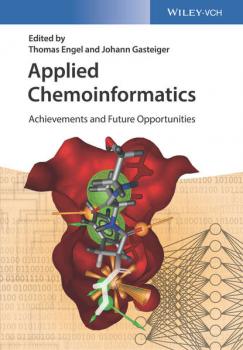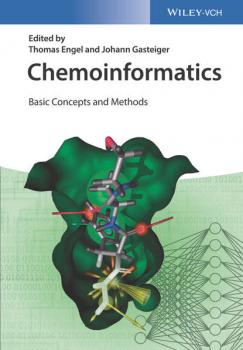ТОП просматриваемых книг сайта:
Thomas Engel
Список книг автора Thomas EngelАннотация
Edited by world-famous pioneers in chemoinformatics, this is a clearly structured and applications-oriented approach to the topic, providing up-to-date and focused information on the wide range of applications in this exciting field. The authors explain methods and software tools, such that the reader will not only learn the basics but also how to use the different software packages available. Experts describe applications in such different fields as structure-spectra correlations, virtual screening, prediction of active sites, library design, the prediction of the properties of chemicals, the development of new cosmetics products, quality control in food, the design of new materials with improved properties, toxicity modeling, assessment of the risk of chemicals, and the control of chemical processes. The book is aimed at advanced students as well as lectures but also at scientists that want to learn how chemoinformatics could assist them in solving their daily scientific tasks. Together with the corresponding textbook Chemoinformatics – Basic Concepts and Methods (ISBN 9783527331093) on the fundamentals of chemoinformatics readers will have a comprehensive overview of the field.
Аннотация
This essential guide to the knowledge and tools in the field includes everything from the basic concepts to modern methods, while also forming a bridge to bioinformatics. The textbook offers a very clear and didactical structure, starting from the basics and the theory, before going on to provide an overview of the methods. Learning is now even easier thanks to exercises at the end of each section or chapter. Software tools are explained in detail, so that the students not only learn the necessary theoretical background, but also how to use the different software packages available. The wide range of applications is presented in the corresponding book Applied Chemoinformatics – Achievements and Future Opportunities (ISBN 9783527342013). For Master and PhD students in chemistry, biochemistry and computer science, as well as providing an excellent introduction for other newcomers to the field.
Аннотация
This first work to be devoted entirely to this increasingly important field, the «Textbook» provides both an in-depth and comprehensive overview of this exciting new area. Edited by Johann Gasteiger and Thomas Engel, the book provides an introduction to the representation of molecular structures and reactions, data types and databases/data sources, search methods, methods for data analysis as well as such applications as structure elucidation, reaction simulation, synthesis planning and drug design. A «hands-on» approach with step-by-step tutorials and detailed descriptions of software tools and Internet resources allows easy access for newcomers, advanced users and lecturers alike. For a more detailed presentation, users are referred to the «Handbook of Chemoinformatics», which will be published separately. Johann Gasteiger is the recipient of the 1991 Gmelin-Beilstein Medal of the German Chemical Society for Achievements in Computer Chemistry, and the Herman Skolnik Award of the Division of Chemical Information of the American Chemical Society (ACS) in 1997. Thomas Engel joined the research group headed by Johann Gasteiger at the University of Erlangen-Nuremberg and is a specialist in chemoinformatics.



